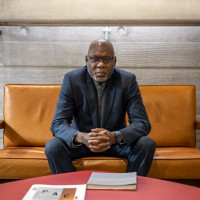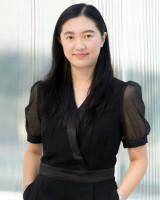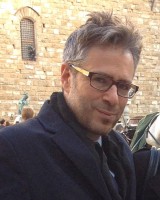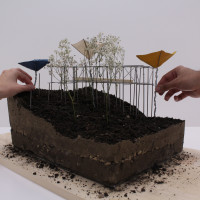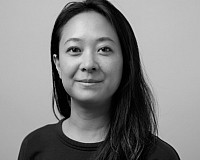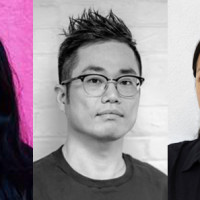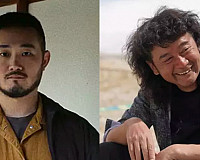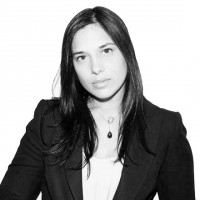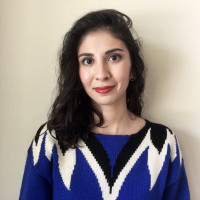Much like the complexities of urban design, British cultural historian Lucy Bullivant can’t be siloed to a single category.
by Sydney Franklin, Goldring Arts Journalism Program
As an adjunct professor at Syracuse University London, Lucy Bullivant’s scope of influence crosses over a handful of professions including literature, design, journalism, curation, and politics. Her class on urban design models taught last fall instructed students in modern city masterplanning, using London as the backdrop for hands-on application.
“We study urban phenomena to discover beyond what we thought we knew about the city,” she said. “We look at ways in which social change makes certain planning legislations seem very out-of-date and up for reevaluation.”
Bullivant’s extensive research and advocacy in urban design qualifies her as a contemporary urban design theorist. But her approach to design, which contradicts most spatial-planned cities, stems from the theory of adaptive frameworking. This idea takes a holistic approach to city planning, emphasizing a relational design sensibility that includes attention to transportation, social equality, sustainability, and public policy.
“Rather than the traditional masterplan,” she said, “the urban framework plan based on wide citizen consultation, setting goals for the short, middle, and long term in an integrated way, is of far more value today.”
Bullivant believes that strategic research of past planning practices can lead to new ways of thinking and finding solutions to present day questions. As a professor, she introduced students to a cross-disciplinary education in the field of urban design – her favorite way to learn.
Last fall, Bullivant encouraged her students to write and engage in speculative thinking as they set out to understand remodeled parts of the city. She took students on several field trips to meet professionals, visit gallery spaces, and tour special projects including Olympic Park and King’s Cross.
If she teaches the course again next year, Bullivant hopes to eventually have students investigate the changes on brownfield sites along the banks of the River Thames, like the conversion of Battersea Power Station and Royal Docks.
“I love putting people and places together,” she said. “It’s a chance to experience London’s urban design culture and values through critical reflection.”
Bullivant’s interest in investigative journalism also ties into this larger critique of urban culture. She had her students assess relevant media commentary on design issues and spend time formulating their own arguments through written papers and diagrams.
“A journalistic approach has a lot to offer students learning to think synergistically about the multitude of issues impacting urban quality of life for everyone,” she said.
Bullivant herself has advocated her theories by writing for design publications like Domus, Volume, The Plan and Architectural Review. Her work with students, architects, policy makers, and artists allows her to collaboratively explore the role of urban design in society. Her webzine Urbanista.org is where Bullivant’s thoughts on these fields collide.
Bullivant’s desire for digital discourse originates from her childhood curiosity in design. “From a young age, I was always making illustrated field trip diaries, architectural models of my own at different scales and thematic collages and drawings, taking photographs and preparing features for a writing club magazine.”
Today, Bullivant does all this on a much larger scale, even as her models course is on hiatus this fall.
She is currently finishing a PhD program through London Metropolitan University’s Sir John Cass Institute for Art, Architecture and Design, where she combines the research from her latest book Masterplanning Futures – winner of Book of the Year at the Urban Design Awards in the UK last February – with her webzine writing.
She’s interested in how critical discussion can leverage change and how art, as well as participation in city events, informs architecture and urban design.
“The material and immaterial life of contemporary cities between, and connecting buildings, can be explored in many different ways,” she said. “Alternative perspectives free up the mind.”
Bullivant is now working on her next book on participatory placemaking, Recoded City: Co-Creating Urban Futures, with co-author and CLEAR VILLAGE founder Thomas Ermacora. She will be giving a lecture in Syracuse on adaptive frameworking and the themes of her books on Oct. 7 in Slocum Auditorium.
In her first trip to Syracuse, Bullivant is interested in seeing how students tackle the urban design challenges the city poses, and what local grassroots initiatives are doing to spur healthy growth.
Her ideas are meant to inspire students and future city designers to think about ways in which hybrid forms of design research, both physical and digital, are better tools for assessing city masterplans.
“Student architects have agency on many levels to make a difference in urban environments,” she said. “Identifying existing assets, defining what is missing, and nurturing potential improvements is urgent. It should not be put off.”

